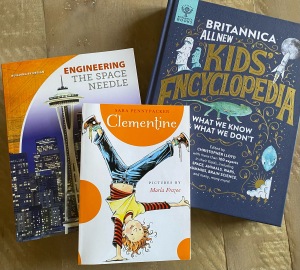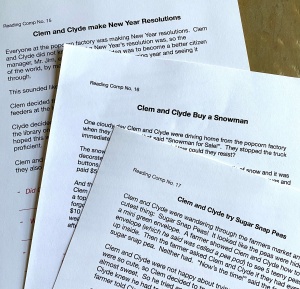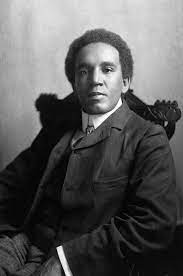TWO QUIZZES! That’s right, not just ONE, but TWO quizzes to test my son’s comprehension of current study endeavors (significant landmarks/animal investigations/the Netherlands). Yay! He scored 100%. (answers at bottom of post)
The General Knowledge Quiz:
1. Who designed and oversaw construction of Mount Rushmore?
a) Gustav Eiffel b) Frank Lloyd Wright c) Alexander Calder, d) Gutzon Borglum
2. The arms (wicks) of windmills turn –
a) clockwise b) counterclockwise c) either way depending upon wind direction
3. Regarding the windmill communication system: the resting placement of the windmill arms (wicks) can signal –
a) good news/bad news/windmill is broken/windmill is resting b) there is no such thing as a windmill communication system
4. The number of bicycles recovered from the Amsterdam canals annually –
a) 100 b) 1,000 c) 10,000
5. The reason San Francisco’s Golden Gate Bridge is painted orange –
a) to stand out in the fog b) at the time of installation (1937), orange was the California governor’s wife’s favorite color c) it was the most affordable paint color that was closest to “gold”
6. The Great Wall of China was built over the span of –
a) 2,000 years b) 1,000 years c) 50 years
7. Today, the largest ships using the Panama Canal, pay tolls of up to –
a) $1 million b) $75,000 c) $1,000
(Here is something fun: In 1928, writer and adventurer Richard Halliburton paid a toll of 36 cents to swim through the canal.)
8. The largest mammal in South America –
a) the giant anteater b) the capybara c) the tapir d) the brown throated sloth
9. Birds have –
a) hollow bones b) gelatinous semi-soft bones c) titanium bones
10. The only bird that can fly backwards –
a) the hummingbird b) the owl c) the bluebird of happiness
The Great Lengths Quiz:
1. The length of the Golden Gate Bridge –
a) 8 miles b) 4.2 miles c) 3.5 miles d) 1.7 miles
2. The length of the Panama Canal
a) 50 miles b) 45 miles c) 25 miles d) 10 miles
3. From furthest point west to furthest point east, which is longer: mainland United States or the Mediterranean Sea? (hint: one is 2,600 miles, the other is 2,400 miles)
a) Mainland USA b) the Mediterranean Sea
4. All things considered (because this is not one continuous structure), how long is the Great Wall of China?
a) 13,000 miles b) 9,500 miles c) 2,100 miles d) 400 miles
5. What is the approximate distance between Earth and the moon?
a) 500,000 miles b) 240,000 miles c) 10,000 miles d) 250 miles
After all that test taking: FUN FICTION READING –
For a look at history: Here Lies the Librarian, Richard Peck – a continually amusing peek into rural American life in the 1920’s: home-made automobiles, romance, dirt roads, bad neighbors, and terrible-to-superb local library management.
For provoking discussion: Millicent Min – Girl Genius, Lisa Yee – Brilliant Millicent is 11, and taking a college level poetry class. Written as a summer journal, short diary entries inform us that Millicent’s mom is forcing her join a volleyball team, Millicent finally has her first friend, Millicent is tutoring somebody who’s lack of academic commitment is driving her crazy. We are sympathizing with this protagonist who has such a rocky time socializing. Awwwww.
For relaxing/laughing/smiling: Tom Gates: Five Star Stories, Liz Pichon. This is book number 21 in the series and we’ve read them all – the quality of the hilarious writing, the hilarious predicaments, the hilarious illustrations has not wavered. At this point, the cast of characters feel like part of our family. Ms. Pichon: KEEP WRITING!
Story Problem: “2-for-the-price-of-1” at the local diner – Tuesday nights at the local diner are a bit slow, so an enticing “Tuesday Night Only” promotion is offered: two manager’s specials (chicken pot pie and apple crisp) for the price of one. If it’s not Tuesday, the price of this dinner is $15 per single order. Last Tuesday 60 patrons ordered the manager’s special. How much money did the special bring in? If the manager’s special costs the diner $5 per order, how much profit did the diner realize? (answers at bottom of post)
Classical Music – How about a THREE-for-ONE special? We listened to three completely different composition styles of Luigi Boccherini, cello virtuoso and composer (1743 – 1805). Boccherini’s early years were spent as a court musician in Vienna. At age 27, Boccherini relocated, becoming a court musician for the Spanish royal family in Madrid (and remained in Spain for the rest of his life). We wanted to hear 1) a Viennese-style piece, 2) a work influenced by the music of Madrid and 3) one of his cello-focused compositions.
The Minuet (movement 3) from Boccherini’s String Quintet in E major, composed in 1771 – this fussy, hummable, very “classical music” melody is instantly recognizable as it has been used in loads of films, TV shows, and video games –
The Fandango, from Boccherini’s Guitar Quintet No. 4 in D major, composed in 1798, shows the influence of the guitar music he was introduced to in Spain. I do not think my son and I have listened to this less than 350 times; it was interesting the first time we heard it, it remains interesting. We love this performance by the L.A. Guitar Quartet –
Cello Showcased – we know we should be extolling Boccherini’s well respected “Cello Concerto in B flat major”, and we did take a listen. The concerto certainly flaunts a cellist’s skills. However, what we love is Boccherini’s String Quintet No. 6 (also known as “Night Music of the Streets of Madrid”). Movement 5, the Passa Calle, in which the cello carries the piece, is warm, full of local flavor, and we really cannot listen without swaying to the tempo –
Welcome to the best part of my day,
– Jane BH
General Knowledge Quiz Answers:
- d) Gutzon Borglum
- b) counterclockwise
- a) good news, etc.
- c) 10,000 bikes
- a) to stand out in the fog
- a) 2,000 years
- a) $1 million
- c) the tapir
- a) hollow bones
- a) the hummingbird
Great Lengths Quiz Answers:
- d) 1.7 miles
- a) 50 miles
- a) mainland USA
- a) 13,000 miles
- b) 240,000 miles
(Story Problem Answers: $450, $150)


































































